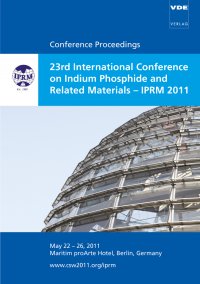Optimisation of seed and mask surfaces in epitaxial lateral overgrowth of indium phosphide on silicon for silicon photonics
Konferenz: IPRM 2011 - 23th International Conference on Indium Phosphide and Related Materials
22.05.2011 - 26.05.2011 in Berlin, Germany
Tagungsband: IPRM 2011
Seiten: 4Sprache: EnglischTyp: PDF
Persönliche VDE-Mitglieder erhalten auf diesen Artikel 10% Rabatt
Autoren:
Junesand, Carl; Hu, Chen; Wang, Zhechao; Metaferia, Wondwosen; Lourdudoss, Sebastian (Laboratory of Semiconductor Materials, School of Information and Communication Technology, KTH, Electrum 229, 164 40 Kista, Sweden)
Inhalt:
The effect of chemical mechanical polishing (CMP) on epitaxial lateral overgrowth (ELOG) of InP is investigated. To this end, silicon wafers with a seed layer of InP has been treated in two ways; by depositing SiO2 mask and polishing it prior to performing ELOG, and by growing additional InP directly on the InP/Si wafer and then polishing the InP layer prior to depositing and patterning SiO2 followed by subsequent ELOG. For InP seed, a two step process with Chemlox(TM) slurry and sodium hypochlorite mixed with citric acid-based slurry has been used whereas for SiO2 surface polishing, only one slurry was employed. Analysis of the ELOG layers has been carried out with atomic force microscope (AFM) and panchromatic cathodoluminescence (PC-CL) 'in-situ' a scanning electron microscope (SEM). The results show that polishing the InP/Si layer has not only a beneficial effect on surface morphology of the ELOG layer but also on reduction of its defect density as a consequence of improved conditions for near-ideal coalescence.


